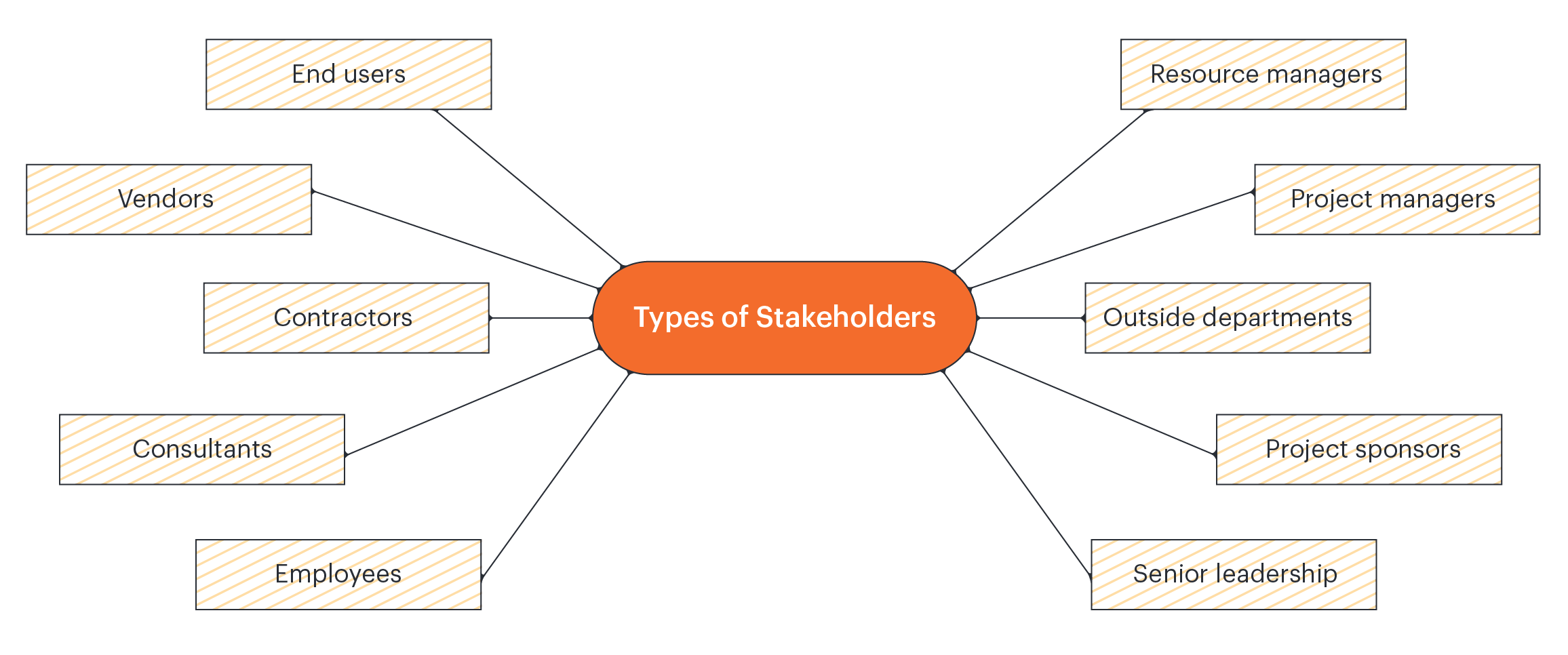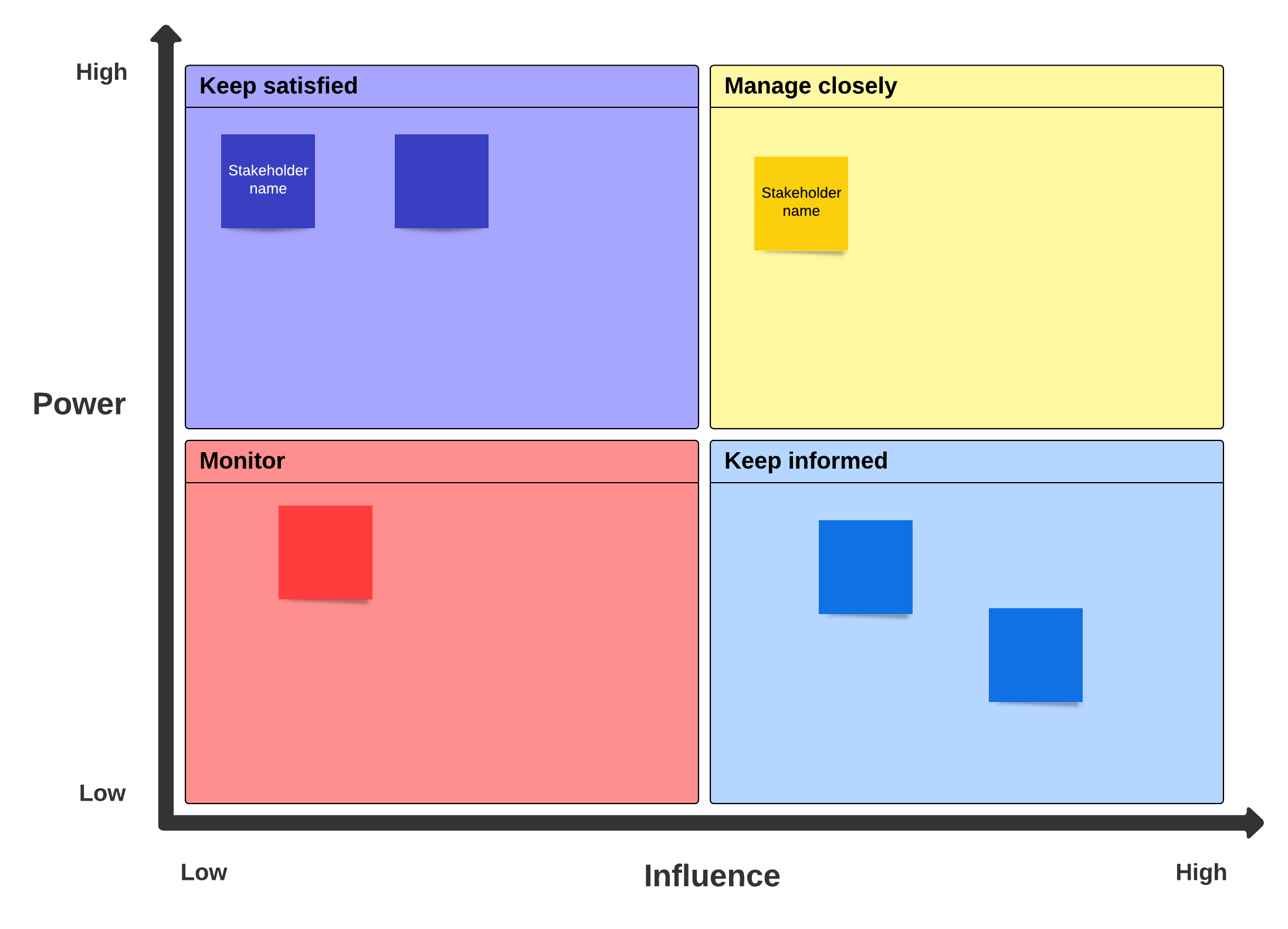
How to efficiently pull in project stakeholders across teams
Reading time: about 7 min
Bringing stakeholders together for a project, when done the right way, can empower your team and also help the project manager effectively manage expectations. To do so, you’ll need a keen understanding of stakeholder management.
Whose role is it to manage stakeholders of a project?
Project managers should analyze their stakeholders and prepare to manage stakeholder expectations and influence. In some projects, the client or customer behind the project may be the one to manage stakeholders. But typically, since the project manager is ultimately responsible for ensuring the project’s success, they should be prepared with stakeholder management strategies.
Typically, projects are most liable to be influenced by stakeholders early on in project planning and the start of implementation. Before the project team’s momentum starts to build, stakeholders generally have the most influence. The project manager should be aware of stakeholder influence and be prepared before the project gets very far along.
Why managing stakeholders is important to a project
Projects happen in organizational contexts, complete with differing personal goals, interpersonal conflicts, and positive and negative relationships. Workplace politics influence the outcome of projects and can place teams in difficult situations. Someone who believes that a particular project may have a negative impact on their career, for example, may feel threatened by the project’s progress. If the project requires their involvement, then the project team will need a strategy to manage that stakeholder’s expectations and impact on the project.
Without proactive stakeholder management, the stakeholders’ interests and plans may be at odds with the project’s goals.
How to manage stakeholders across teams
Though they are likely to be members of different teams, departments, and fields, your stakeholders all must cooperate in order to ensure the success of your project. Stakeholders have varying degrees of interest in and involvement with your project. As you plan and implement your project, you’ll need to understand your stakeholders and strategize about how you’ll manage them. Managing stakeholders is all about ensuring that everyone has the communication and support they need throughout the project.
Identify project stakeholders
Stakeholders come in all roles, departments, teams, and levels of the organization. Any individual or group impacted by your project in some fashion could be considered a stakeholder. As you consider who might be stakeholders for your project, think about how these individuals could be involved:

- End users and customers: The project doesn’t really exist without customers and end users, so their input matters. Your team can get them involved using surveys, user panels, and invites to collaborate with your organization during the project.
- Suppliers and vendors: Vendors may want your team to do more business with them or may want to give their own input on how you do the project.
- Contractors and subcontractors: If they are members of your project team, they may have similar influence and interests to employees. Work they do with other customers could also impact bandwidth or resources otherwise reserved for your project.
- Consultants: Outside experts hired to consult on your project could want to walk your team through their own plans or ideas. As contractors, they may have their own customers to consider and these projects could impact your project.
- Employees: People in your organization may have different interests and feelings about the project. Some may have personal goals within the organization and see your project as potentially impacting those goals.
- Project team members: As they work on your project, your team’s motivations and interests may impact their work. Someone eyeing a promotion, for instance, may try harder to let their own personal contributions shine brighter. In the process, other team members may react. Project managers should consider how their team views the project and what they may stand to gain or lose.
- Resource managers and other managers: Other managers may view a project as competition for the same resources (particularly if they plan to use the final product or expect to benefit from it) or as something that doesn’t affect them.
- Other departments impacted by your project: How your project impacts other departments is worth considering. Could anyone be benefitted, threatened, or unaffected entirely by your project?
- Project sponsors: Leaders sponsoring your project generally value and understand its potential. They may want frequent updates and be watching closely for your team’s success.
- Project managers: For the people leading the project, achieving goals and project success is likely the biggest priority. In addition to leading the project, project managers are also responsible for ensuring communication and providing everyone with the right resources.
- Senior leadership: In order to achieve your project’s goals, you’ll need backing and support from senior leadership in your organization. How these leaders view your project can make or break your results.
Your project may have other stakeholders that aren’t on the above list. While documenting your stakeholders, you may realize that your stakeholder list is fairly long. Keep in mind that good stakeholder management strategies don’t require you to devote the same time and resources to every stakeholder in the same way. How you manage stakeholder relationships will depend on the stakeholder’s identity, interest, and influence on the project. Use our stakeholder mapping template for stakeholder management.

Review expectations with stakeholders
Different stakeholders will make different assumptions about the project and have their own expectations. Ideally, the project team should review and set appropriate expectations with stakeholders early on. As milestones are achieved and the project progresses, you can tailor communication to the needs of individual stakeholders to reduce the likelihood of confusion and help everyone to be on the same page.
Identify stakeholders’ interest and influence
Finding out what each stakeholder wants, believes about the project as it progresses, is essential to crafting and executing a stakeholder management plan.
Develop a communication strategy
Each stakeholder has distinct interests. Communication strategies should take this into account. After analyzing your stakeholders and determining their motivations and interest levels, you’ll want to find out more about their communication preferences.
You may communicate more frequently with highly involved stakeholders such as project sponsors and send an occasional update with bullet points for another department with only minor interest.

Want more tips for creating a communication strategy for a project?
Read morePerform risk/change impact analysis
Stakeholders have different levels of impact and influence. The support of a key project sponsor may be necessary for securing the right resources, for instance. The product’s users must support the project for different reasons—without their approval, the project doesn’t have a true purpose.
If conflict looks like a possibility, you may want to plan how you’ll resolve differences and conflicts with stakeholders. Misunderstandings may be easily cleared up with more in-depth information or different types of information.
For serious conflicts, evaluate carefully before escalating your response.
Execute plans and evaluate success
As with your project plan, you’ll need to evaluate your success with stakeholder management. Stakeholders should be sufficiently engaged in the project, communicated with, and involved if the project plan is modified or updated.
How to engage stakeholders
Based on your stakeholder management strategies and individual preferences, engage your stakeholders in the project and get stakeholder buy-in.
Change how you work
One of the simplest ways to get them involved is to ask them how they want to participate. If they aren’t involved enough or are too involved, try to strike a balance that works for your project and your stakeholder. Offering to change how you work with stakeholders can be beneficial as long as it doesn’t add too much pressure to you as the project manager.
Gather feedback
Whenever practical, invite your stakeholders to share their feedback. Making the feedback process easy for them and for you will probably pay off in the long run. This may mean using in-person or virtual meetings, sharing visuals, creating a short report, or even just sending stakeholders an email at regular intervals.
Promoting cross-team collaboration
Stakeholders outside of your project team can offer valuable feedback and unique contributions to your goals. By managing stakeholders carefully and thoughtfully, you provide them with the best chance of making a positive impact on your project.

Learn more about stakeholder analysis.
Read moreAbout Lucidchart
Lucidchart, a cloud-based intelligent diagramming application, is a core component of Lucid Software's Visual Collaboration Suite. This intuitive, cloud-based solution empowers teams to collaborate in real-time to build flowcharts, mockups, UML diagrams, customer journey maps, and more. Lucidchart propels teams forward to build the future faster. Lucid is proud to serve top businesses around the world, including customers such as Google, GE, and NBC Universal, and 99% of the Fortune 500. Lucid partners with industry leaders, including Google, Atlassian, and Microsoft. Since its founding, Lucid has received numerous awards for its products, business, and workplace culture. For more information, visit lucidchart.com.
